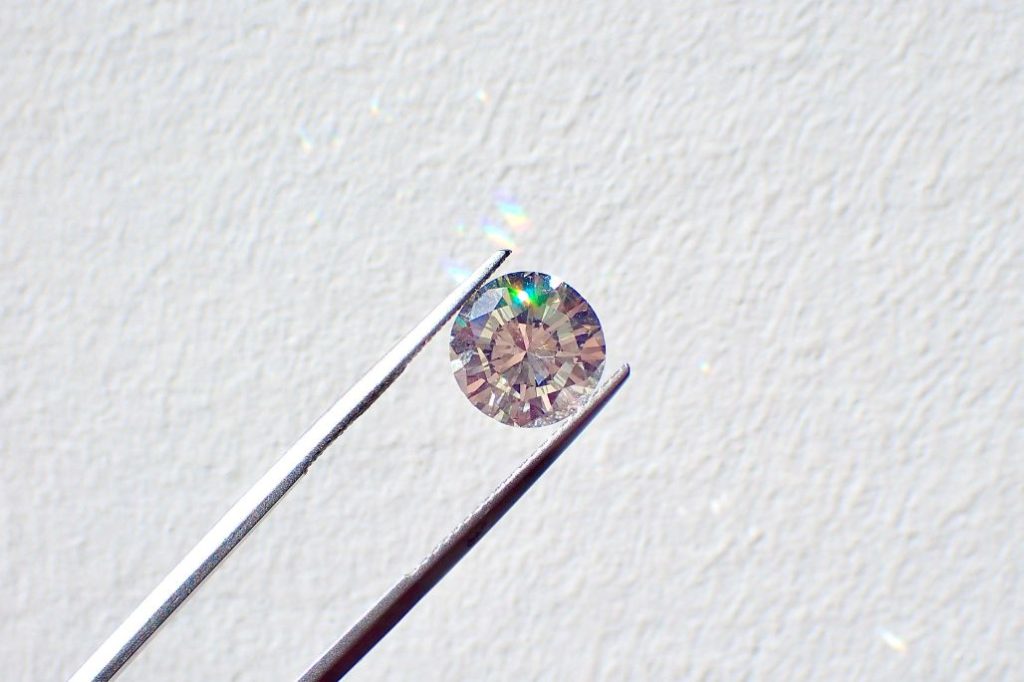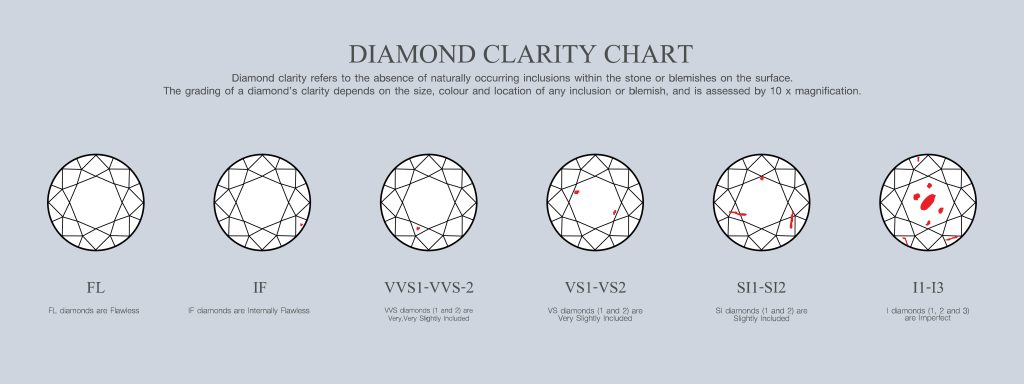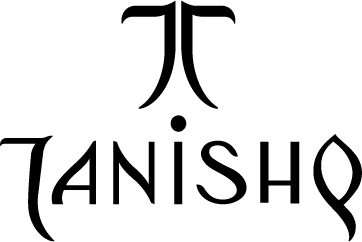
Diamonds have long been a symbol of love and commitment, and their beauty is
undeniable. One of the key factors that determines a diamond’s value and appeal is its
clarity. When we talk about diamond clarity, we are referring to the presence of internal
and external flaws, also known as inclusions and blemishes, and how they impact the
overall appearance of the diamond.
Diamond clarity refers to the absence of inclusions (internal imperfections) and blemishes
(external flaws) within a diamond. These tiny flaws can range from microscopic to visible to
the naked eye. The fewer imperfections a diamond has, the higher its clarity grade and,
consequently, its price.
To understand diamond clarity better, it’s essential to familiarize yourself with the diamond
clarity scale chart, also known as the diamond purity chart. This chart outlines the various
clarity grades, ranging from Flawless (FL), which is the highest, to Included (I), which
denotes the lowest clarity.

- Flawless (FL): No inclusions or blemishes are visible under 10x magnification.
These diamonds are extremely rare and command extravagant prices. - Internally Flawless (IF): No internal inclusions are visible under 10x magnification.
However, minor blemishes might be present on the surface. - Very Very Slightly Included (VVS1 and VVS2): Inclusions are extremely difficult for
a skilled grader to see under 10x magnification. However, even diamonds with
slightly lower clarity grades can still appear flawless to the naked eye, making them
a much more affordable option without sacrificing visual appeal. - Very Slightly Included (VS1 and VS2): Minor inclusions are visible under 10x
magnification but are difficult for the naked eye to see. - Slightly Included (SI1 and SI2): Inclusions are noticeable under 10x magnification
and may sometimes be visible to the naked eye. - Included (I1, I2, I3): Inclusions are obvious under 10x magnification and often
visible to the naked eye. While these imperfections may impact the diamond’s
value, they can often be disguised or minimized through expert cutting and setting.
While the diamond clarity scale chart provides a standardized measure, it’s essential to
remember that even diamonds with lower clarity grades can appear stunning to the naked
eye. The position and nature of the inclusions play a crucial role in their visibility. For
instance, inclusions located in the diamond’s depths are less likely to affect its brilliance
than those situated near the surface.
When choosing a diamond, it’s advisable to prioritize clarity based on your personal
preferences and budget. Remember, diamond clarity is just one aspect of a diamond’s
overall quality. The interplay of cut, color, clarity, and carat weight determines a diamond’s
brilliance and fire. By understanding the diamond clarity scale and considering your
personal preferences, you can make an informed decision when selecting the perfect
diamond.
Ultimately, the most important factor is choosing a diamond that resonates with you and
brings joy. Whether it’s a flawless gem or a diamond with character, the beauty of a
diamond lies in its ability to captivate and inspire.
